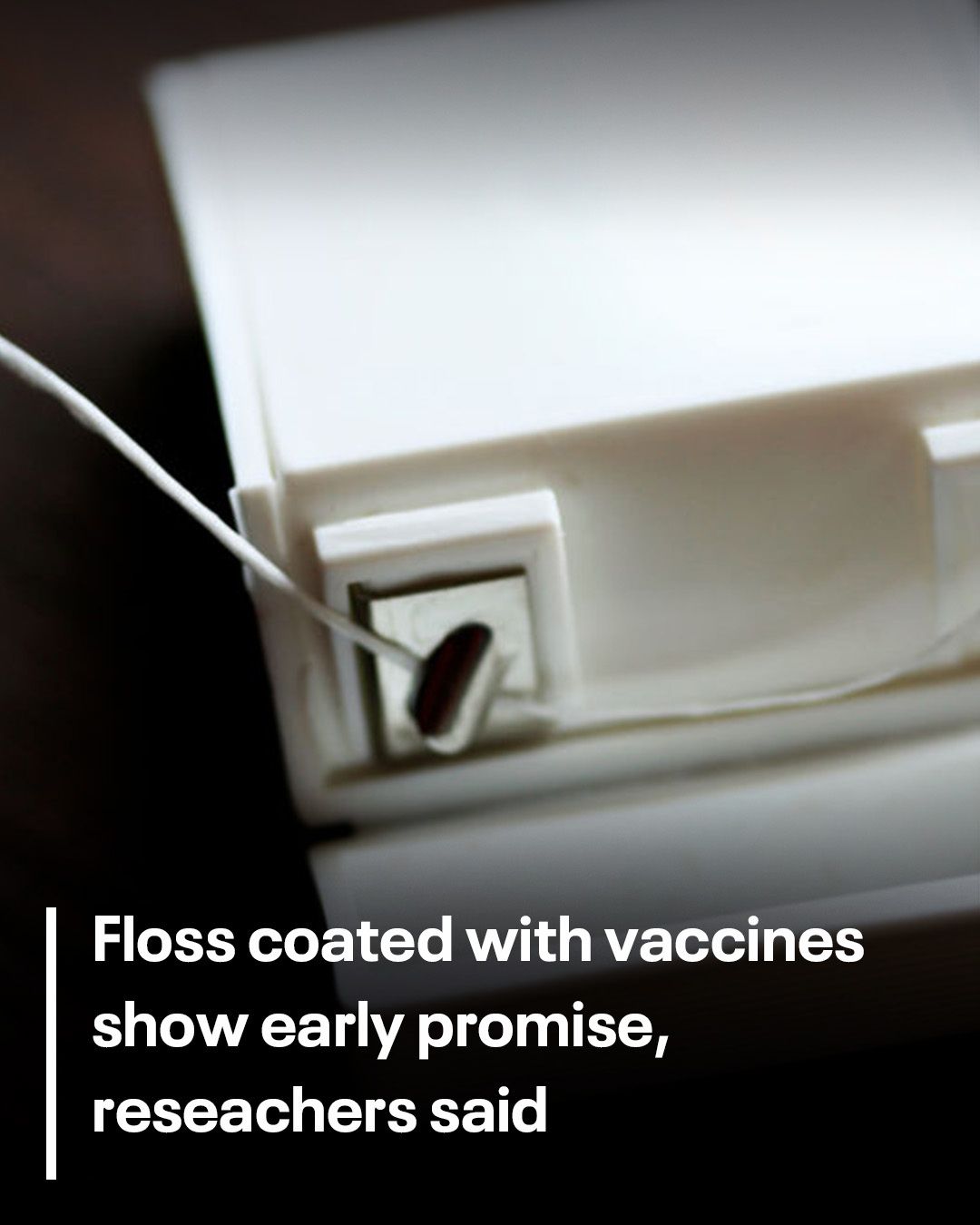For countless people, the fear of needles makes getting vaccinated a stressful experience, and for some, it’s even enough to skip important vaccines altogether. But scientists may have discovered a groundbreaking alternative that could make shots a thing of the past. In a recent study out of North Carolina, researchers tested a novel method of delivering vaccines using something as ordinary as dental floss, and the results were surprisingly promising.

The experiment, which was conducted on lab mice, showed that floss laced with flu vaccine molecules was not only able to transfer the vaccine effectively into the animals’ gums but also triggered a strong immune response. Even more encouraging, the vaccinated mice were fully protected against what would have otherwise been a fatal influenza infection. If further research supports these results in humans, this could mark the beginning of a needle-free era for vaccinations. The idea behind this method comes from earlier studies on oral vaccine delivery.
Researchers at North Carolina State University have long explored the mouth as a potential pathway for immunization. Unlike injections, which work directly in the bloodstream, oral vaccine delivery has the unique ability to create two lines of defense: systemic immunity throughout the body and mucosal immunity in the tissues that line the mouth, nose, throat, and digestive tract. Since many viruses enter through mucosal surfaces, building immunity there is particularly valuable.
While previous attempts to deliver vaccines through the cheeks or under the tongue produced mixed results, the principle showed enough promise to push researchers to test new techniques. That’s when they turned to dental floss. In this experiment, scientists coated floss strands with different vaccine molecules and applied them to the gums of mice. The floss successfully delivered the vaccine into oral tissues, where immune cells responded strongly. Researchers then took the test a step further, exposing the mice to a lethal dose of influenza.
To their excitement, the floss-based vaccine provided complete protection, proving that the method was not only effective in stimulating immunity but also lifesaving in practice. Rohan Ingrole, the study’s first author from Texas Tech University, explained that the flossing technique offered protection comparable to nasal vaccine delivery. That detail matters, because while some vaccines have been successfully administered through the nose, many cannot be delivered this way due to the strong barrier functions of nasal mucosa.
As Dr. Harvinder Singh Gill noted, the nasal epithelium often prevents vaccines from being absorbed efficiently, which limits its usefulness. The gums, however, appear to be a more accessible and effective pathway, making flossing a practical and powerful option. The potential implications are enormous. For one, the innovation could help overcome one of the biggest psychological barriers to immunization: needle fear.
Millions of adults and children experience anxiety at the thought of injections, and for a subset of the population, this phobia leads them to avoid necessary vaccines altogether. A painless, needle-free delivery system could dramatically increase vaccination rates worldwide. Beyond reducing fear, this approach might also simplify logistics. Traditional vaccines require syringes, trained personnel, and proper disposal of medical waste.
A floss-based system, if developed for humans, could make distribution easier, cut down on medical waste, and possibly even allow for at-home administration under guidance. That could be especially useful in global health efforts where access to medical facilities is limited. Of course, the idea is still in its early stages. The findings so far apply only to lab mice, and human biology is more complex. Researchers caution that more studies are needed to determine whether floss-delivered vaccines are safe, effective, and practical for humans. Key questions include figuring out the right formulations, dosing, and durability of immunity. Still, the fact that the method provided full protection against influenza in animals is enough to justify further exploration.
It also opens the door to testing this delivery method with other vaccines, from routine childhood immunizations to vaccines against emerging infectious diseases. If flossing can become a reliable vaccine delivery system, it could revolutionize preventive medicine. Imagine a future where your dentist, rather than your doctor, could provide you with vaccines during a routine check-up—or where pharmacies offer quick floss-based immunizations instead of injections. For patients, the experience would be simple and painless. For healthcare providers, it could streamline delivery and improve compliance. What makes this idea particularly appealing is that it takes something familiar and non-threatening, like floss, and transforms it into a medical tool with life-saving potential. Dental floss, long associated only with oral hygiene, could someday play a critical role in protecting against global diseases.
While it might sound unusual now, history shows that many medical breakthroughs once seemed unconventional until they became part of everyday life. For now, the research team stresses that these findings are just the beginning, but they represent an exciting step forward in the quest for needle-free vaccines. The hope is that with more testing, refinement, and eventually human trials, floss-based vaccines could join the arsenal of modern medicine, making vaccination more accessible, less intimidating, and potentially more effective. For anyone who has ever dreaded rolling up their sleeve for a shot, the future may one day look very different. Instead of bracing for a needle, you may simply reach for a piece of floss—and in the process, protect yourself against deadly disease.





